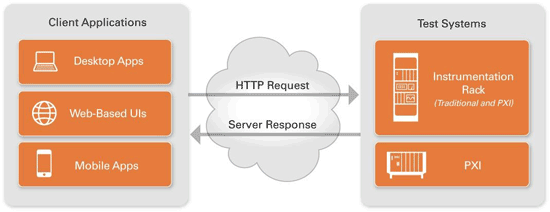
If there’s one thing test engineers need to do their jobs, it’s a good crystal ball. That’s because they are always working to solve future test problems. They ask themselves, “How will we test the product that our designers are about to start working on? When they release it to manufacturing, how will we check the parts coming off the line? What kind of testing will be needed in the field or repair shop?” Test engineers really have to be prescient if the product is going to hit the market on time, in spec, and at the right price.
This month, they were offered a lot of help by National Instruments, in the form of The Automated Test Outlook: 2012. Authored by Kevin Bisking, David Hall, Chetan Kapoor, Mike Neal, and Ryan Verret, all managers at National Instruments,* the report takes a look at five major trends NI believes will significantly influence automated test, not in some far-distant future time, but in a practical time span — the coming one to three years.
The work is comprehensive; it deals with issues ranging from the new role of the test organization in successful companies (test engineering becomes a strategic asset) to PCI Express moving from an internal to an external interface.
While I wish I had the space and time to go into all of the report’s topics in greater detail, there are two in particular that deal with what is now one of the most important pieces of test equipment: software.
In Section 4 of the report, Group Manager Mike Neal writes “While tablets and smartphones cannot replace ubiquitous PC or PC-based measurement platforms like PXI, they offer unique benefits when used as extensions to a test system.” He then goes on to look at their role in test system monitoring and control, and in test data and report viewing. The devices open the door to web services and browser-based remote operation in ways that really haven’t existed before. “While today’s technology offers solutions for monitoring or remote reporting via mobile devices,” notes Neal, “test organizations will need new expertise to unite the networking, web services, and mobile app portions of the solution.”

NI says testing will rely more heavily on having mobile devices, the web, and the cloud as elements of a complete test system.
The final chapter of the report, written by Senior Product Manager Ryan Verret, discusses what may turn out to be one of the most significant developments in testing: portable measurement algorithms. Verret argues that FPGAs are ushering in the next phase of the virtual instrumentation revolution, which was initiated by microprocessors 20 years ago. Hardware-defined algorithms on these devices now perform data analysis and reduction, computation, and data processing for display. But in the case of many test instruments, the FPGAs are closed; users can’t install their own custom measurement algorithms.
What Verret proposes is a new set of advanced development tools that provide algorithm portability across hardware targets, and make the advantages of FPGAs available to all engineers developing test systems. These tools would include a hardware description language (HDL) that completely abstracts some of the hardware-specific attributes of FPGA design, and high-level synthesis (HLS) that captures algorithms at a high level while permitting independent specification of performance attributes for a given implementation. Finally, there needs to be a means of coupling measurement portability across hardware targets with multiple models of computation and design capture. “These models of computation might include the LabVIEW dataflow diagram, DSP diagrams for multirate signal processing in RF and communication applications, textual math for capture of textbook-like formulas, or state machines for digital logic and protocols,” states Verret.
The result, if my crystal ball is working right, is that test IP becomes a bankable and marketable asset.
Be sure to look at the full report online at http://www.ni.com/ato. You can download the report as a pdf, which I’ve done with my smartphone, so I can keep it handy for future reference.
[* An earlier version of this story misidentified the authorship of The Automated Test Outlook: 2012 . My apologies to authors Kevin Bisking, David Hall, Chetan Kapoor, Mike Neal, and Ryan Verret for this error. RC]
Advertisement
Learn more about Electronic Products Magazine





